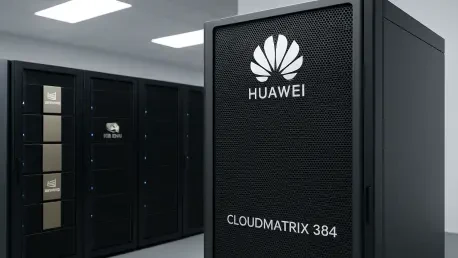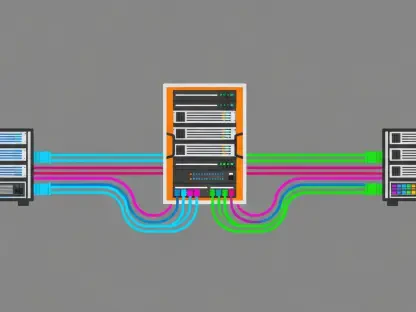Huawei’s ambitious entrance into high-performance AI hardware with its CloudMatrix 384 system signifies a notable shift in the competitive landscape. The World Artificial Intelligence Conference in Shanghai saw Huawei showcase its intentions to rival Nvidia’s dominance, raising vital questions about market dynamics and future prospects. This analysis explores the influence of Huawei’s bold strategy on the AI hardware sector.
The AI Hardware Landscape: A Competitive Narrative
Huawei’s foray into the AI hardware market comes amid a shift in the sector’s hierarchy, traditionally led by Nvidia. With stronghold technologies like Nvidia’s CUDA platform, the landscape has seen limited shake-ups. However, geopolitical tensions and export restrictions, mainly involving the United States, have prompted strategic recalibrations. Huawei’s introduction of the CloudMatrix 384 system amidst these conditions not only challenges Nvidia’s market hold but also offers new alternatives, primarily within China’s burgeoning tech sector.
Analyzing CloudMatrix 384’s Technical Ambitions
System-Level Innovations in AI Computing
The introduction of CloudMatrix 384 positions Huawei as a competitive entity against Nvidia’s established technology, notably the GB200 NVL72 chip. Although Nvidia’s Blackwell B200 GPU maintains its lead in raw performance and memory capacity, Huawei’s strategic focus on system-level advancements presents a compelling narrative. By utilizing a higher integration of compute and HBM chips, Huawei projects potential performance superiority, claiming a 40% improvement in PFLOP capabilities. Yet, this advantage faces hurdles, such as increased power consumption, potentially limiting large-scale international adoption despite localized benefits like lower Chinese electricity costs.
Navigating Software Ecosystem Challenges
A substantial obstacle in Huawei’s plan lies in the entrenched software ecosystem dominated by Nvidia’s CUDA. Transition costs for developers switching from this platform create a notable barrier. However, the gradual tilt toward flexible options like PyTorch indicates evolving market trends. Huawei is proactively developing software tools to emulate CUDA’s efficiency, enhancing compatibility with PyTorch, and investing in platforms like ONNX to facilitate cross-platform integration. These efforts illuminate Huawei’s strategic grasp of the software dimension in AI hardware competition.
Future Horizons and Industry Movements
The unveiling of Huawei’s CloudMatrix 384 underscores broader industry shifts toward innovation and diversification. The AI hardware sector anticipates accelerated technological evolution, driven by economic trends and regulatory implications. As Huawei’s initiatives gain traction, a diversification in system integration strategies seems likely. Such evolution could challenge the prevailing dependency on singular hardware paradigms, inviting scrutiny on how evolving frameworks might reshape competitive balances.
Strategic Implications and Recommendations
Reflecting on Huawei’s strategic maneuvering, the AI hardware market finds itself at a pivotal juncture. Key takeaways suggest businesses and stakeholders need to remain agile and forward-thinking, as technological advancements continue to define the landscape. Recommended actions include nurturing partnerships for enhanced knowledge exchange and aligning market strategies with unfolding AI trends. With strategic adaptability, stakeholders are positioned to capitalize on emerging opportunities, driving substantial returns on AI investments.
Conclusion: Navigating the Competitive AI Landscape
Huawei’s decisive entry into AI hardware through the CloudMatrix 384 system sparked a reevaluation of established market dynamics. The interplay of technological, economic, and geopolitical forces highlighted a potential shift in industry norms. As Huawei challenged existing paradigms, stakeholders are encouraged to engage with these developments strategically, anticipating an era of transformative synergies and breakthroughs within the AI hardware sector.









